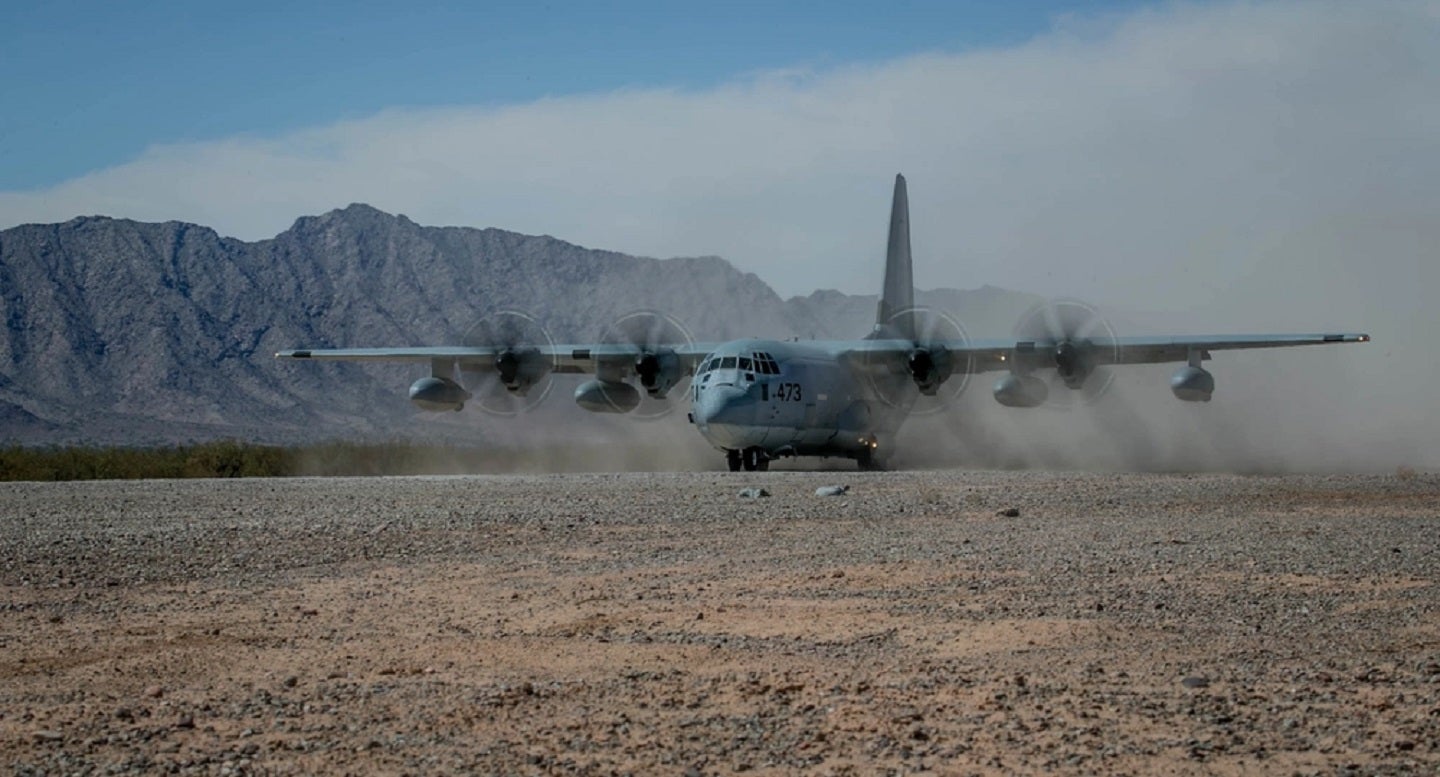
The US Department of Defense (DoD) has extended its KC-130J services contract to support the tanker aircraft fleet of the Kuwait Air Force. The contract was awarded to the Oklahoma-based Aviation Training Consulting LLC for $28m on 16 March.
Work will be performed in Altus, Oklahoma (13%); and Kuwait (87%), and is expected to be completed in March 2025.
The KC-130J is the latest of Lockheed Martin’s extended-range tanker aircraft, which is based on the C-130 Hercules transport aircraft. It is the latest variant that supports the US Marine Corps.
While the tanker is widely considered a reliable aircraft, especially considering its long-lasting use, according to a GlobalData forecast the DoD’s spending on the KC-130J will be up and down between 2023-33. However, spending will still grow at a compound annual growth rate of 5.37% in the same period according to the company’s report on The Global Military Fixed-Wing Aircraft Market Forecast, 2023-33.
Meanwhile, the Kuwaiti Government, a key US ally situated at the north-eastern tip of the Persian Gulf, will also benefit from support services for its own KC-130J fleet. Currently, the Kuwait Air Force has three units of the tanker aircraft, which were procured between 2010 and 2014 according to GlobalData insight into the Kuwait Armed Forces Equipment Inventory.
These tanker aircraft refuel Kuwait’s Eurofighter Typhoons Tranche 3A combat aircraft procured since 2017, the first of which were received in 2020.
Kuwait air force priorities
The Kuwait Air Force remains the primary offensive force out of the country’s military services. The Kuwaiti procurement strategy reflects an implicit focus on developing a robust air combat capability, with specific emphasis on inducting high-tech multirole aircraft, as well as air superiority fighters.
Kuwait has emerged as one of the most attractive defence markets in the Middle East, since it is dependent on others to fulfil its military needs. The most attractive sectors in Kuwait’s defence market are military fixed-wing, missiles and missile defence systems and military land vehicles.
The country is anticipated to cumulatively spend $8bn on the military fixed-wing sector over 2022–27. The market for combat aircraft is anticipated to be $8m over 2022–27, and Kuwait is expected to spend $128m on intelligence, surveillance and reconnaissance (ISR) aircraft over the same period. Kuwait is upgrading its air force amid security concerns in the region linked to the rise of the self-proclaimed Islamic State (IS) group.
The beginning of the end?
Although the C-130 Hercules has been an enduring and reliable aircraft family, some countries are beginning to look elsewhere as the C-130 has supported militaries across the world since the 1950s, and the KC-130J is very nearly two decades old.
The United Kingdom has been leading the transition away from the C-130 for months. The Royal Air Force (RAF) will soon replace its C-130J fleet with the modern Airbus A400 Atlas. “The Atlas was always earmarked to replace the Hercules and although its tactical capability is likely to have expanded dramatically by 2022, the C-130J clearly had an important tactical role to play until the A400M was fully established,” the RAF remarked on its profile of the UK’s history of inducting the Hercules.
This line of thinking does raise concerns regarding the longevity of the C-130J. However, Kuwait’s KC-130J fleet is not too old to discontinue just yet. Even so, the day may soon arrive for a transition and the US has already planned to invest in this future tanker change.
As of 2024, according to GlobalData analysis the US will gradually invest equally in two new tanker programmes: the Bridge Tanker programme (KC-Y) and the Future Aerial Refuelling Tanker (KC-Z). The US will invest just over $1bn in each programme in 2024, which is expected to rise to $1.9bn in 2033 respectively.




